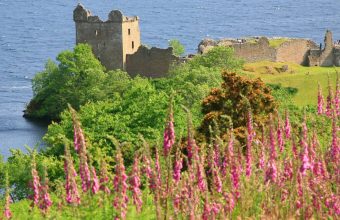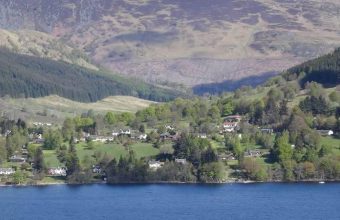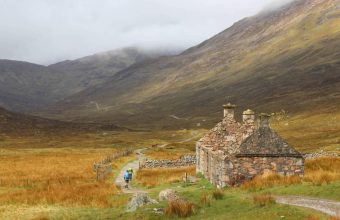The Fife Coastal Path
A beginner's guide to walking the Fife Coastal Path
Tamer than most of Scotland's walking trails, the Fife Coastal Path passes through picturesque seaside villages, old smuggling caves, and fabulous beaches.
The 188km, well-signed route is especially glorious in summer. There are many historical castles and sites in addition to the stunning sea views; Fife is bounded by the Firths (estuaries) of the Forth and Tay, to the south and north respectively, and juts east into the North Sea. I highly recommend you take a boat trip to one of the islands while you're here.
The route really lends itself to walking in multiple sections if that takes your fancy rather than one big undertaking. Its character changes a lot from the low-lying easy first half to include some rougher but straightforward parts on the easternmost section, the East Neuk.
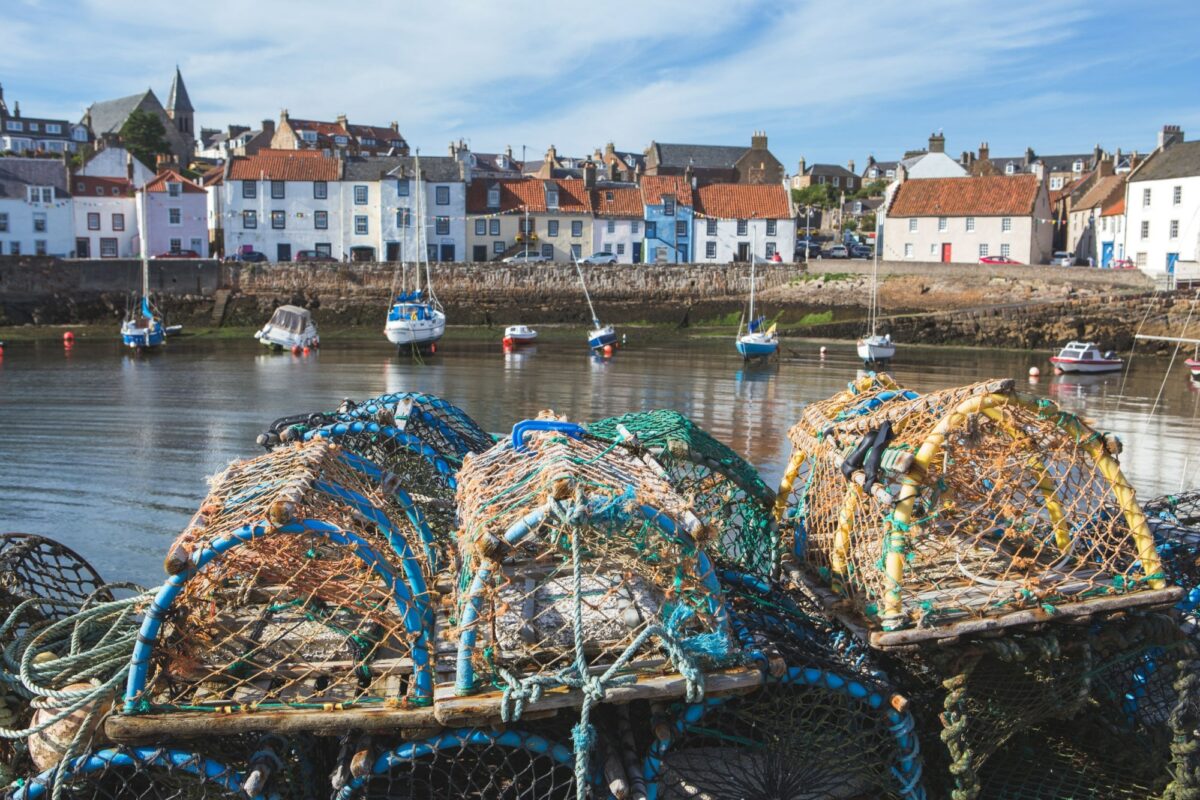
Pittenweem fishing village, Fife
Fife Coastal Path
Distance: 117 miles (188km)
Duration: Eight days
Start point: Kincardine
End point: Aviemore
Difficulty: Easy first half, easy to moderate thereafter – well-marked route; few steep gradients; rough ground and slippy steps in places; some sections only suitable at low tide
Suitable for: Most walkers, family friendly sections
Fifers are proud of their historical importance – Dunfermline was Scotland’s ancient capital – and they stoutly defend the popular county title ‘the Kingdom of Fife’.
There´s more wildlife along the route than you might expect, even where it passes busy urban areas at Kirkcaldy and adjacent former steelworks and old colliery sites. Further east there are several wildlife reserves and a seal colony. The mouth of the Tay estuary is also where hundreds of sea ducks and wildfowl come to roost. And the dunes are full of fluttering butterflies during the summer months.
Fife Coastal Path route
Starting from the western extremity of Fife at the village of Kincardine on the River Forth the path entices you east. Bridges span the Firth of Forth and for the remainder of this section, you can clearly see the far side. The walking is easy and delightful on a calm day when the water can appear like a mirror.
Soon the excellent path runs to Culross by the prominent chimney stack of the last coal-powered station in Scotland, Longannet, which closed in 2016 marking the end of an era as the Fife Coalfield was one of the principal coalfields in Scotland until the late 80s.
Allow plenty of time to see the ancient burgh town, which is very attractive and is packed with colourful, Old Dutch style stone buildings which attest to the strong trade links that the Forthside town had with Veere in the Netherlands. During the 16th century, the town had a thriving community, developed under the laird, Sir George Bruce, and for whom the striking red-tiled Culross Palace was built.
Torry Bay Local Nature Reserve is passed before a steep climb above the firth. The historic villages of Charleston and Limekilns are reached after. Day one gives a good taste of the variety of the Fife Coastal Path for the next sections
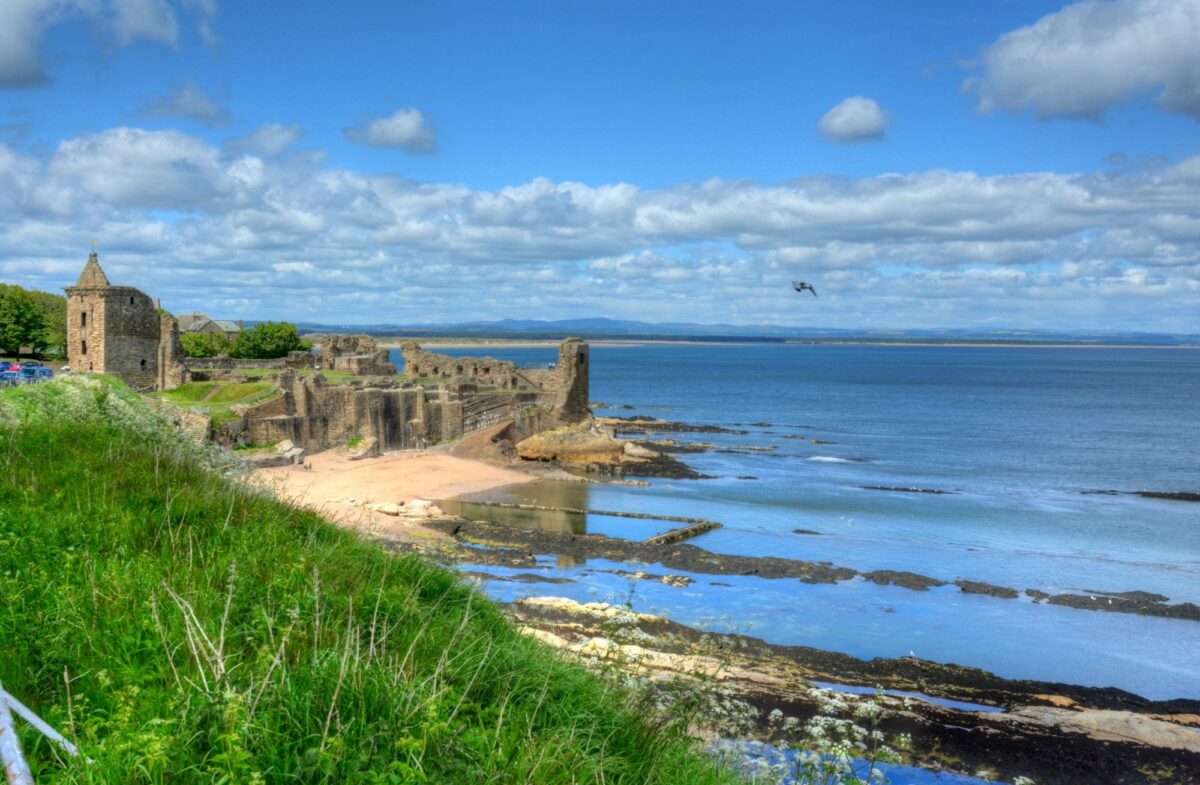
Ruins of St Andrew's Castle, Fife
Day four follows sandy beaches during low tides, with alternatives at other times. Beyond Largo Bay the path climbs to Shell Bay where there are two options – one goes up over the cliffs, the second the Ellie Chainwalk hugs the rocks with chains for handholds. Elie is a beautiful harbour village like many to follow.
Day five can´t be beaten though for its string of picturesque harbours. Pittenweem, Anstruther and Crail are all linked by the coastal path which is easy to follow and ideal for families. From Anstruther, there are daily boat trips during the summer months to the puffin-filled Isle of May nature reserve.
Beyond Crail the terrain becomes rough. The path narrows by Fife Ness with more low tide only sections beyond a golf course.
Day six also needs to be planned in advance due to sea levels. The rewards are the sense of remoteness and views of a pink sea stack, the Buddo Rock, and the Rock and Spindle, the weathered remains of a volcanic plug. The path leads to the East Sands by St Andrews – the famous golf centre and university town – where you should visit the centre to see the beautiful but ruined 12th-century cathedral.
Heading on from Leuchars the following day is an easy family-friendly section as far as Tayport. It passes through Tentsmuir Point National Nature Reserve. Located at the mouth of the Tay Estuary this forms an important roosting and feeding area for huge gatherings of seaduck, waders and wildfowl. It is also a haul-out area for more than 2000 common and grey seals. Butterflies are a feature of the grassland and dunes too.
Further on you will see Broughty Ferry on the far side of the Tay and then Dundee. It´s fun to realise you have rounded Fife!
One last day of the Fife Coastal Path is all that remains. It takes in the sizeable Normans Law and leads through some nice woodlands. It leads to a suitably pleasing end in the charming town of Newburgh at the coastal path arch.
Fife Coastal Path day by day
Accommodation is plentiful in all locations, though you should book early, and is largely B&Bs or hotels.
The exception is the final day section from Balmerino to Newburgh, though Newburgh itself has plenty of options.
The entire route from Kincardine as far as Newport-on-Tay is well served by public transport, and the section between Kincardine and Kirkcaldy is served by the mainline railway.
More detailed information on sections affected by tides can be found from the official path website.
Day 1: Kincardine to Limekilns (11 miles)
Day 2: Limekilns to Burntisland (17 miles)
Day 3: Burntisland to Buckhaven (14 miles)
Day 4: Buckhaven to Elie (13 miles)
Day 5: Elie to Cambo Sands (16 miles)
Day 6: Cambo Sands to Leuchars (14 miles)
Day 7: Leuchars to Wormit Bay (16 miles)
Day 8: Wormit Bay to Newburgh (15 miles)

